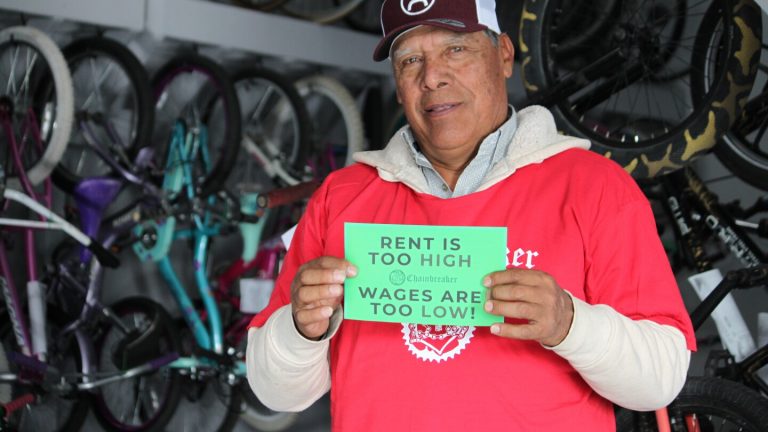SANTA FE, N.M. (AP) — Santa Fe has long referred to itself as “The City Different” for its distinct atmosphere and a blending of cultures that stretches back centuries. Now, it’s trying something different — something officials hope will prevent a cultural erosion as residents are priced out of their homes.
It’s the first city in the United States to directly link wages to housing affordability, aiming to counter high rents by tying minimum wage increases to consumer prices as well as fair market rental prices.
Many see the new ordinance as a big step forward for workers, but Mayor Alan Webber also sees it as an important tool for addressing an affordability crisis that threatens the very fabric of Santa Fe.
“The purpose is to make a serious difference in assuring that people who work here can live here,” he said. “Santa Fe’s history and culture is really reflected in the diversity of our people. It’s that diversity that we’re trying to preserve.”
Santa Fe is not alone. Rising rents and housing prices have squeezed households nationwide, leaving many with less income to pay for other necessities. Experts say the financial pressure on renter households has increased compared to pre-pandemic conditions.
How the ordinance works
Santa Fe’s minimum wage will increase to $17.50 starting in 2027. The annual increase historically has been tied to consumer prices, but going forward a new blended formula will be used to calculate the annual increase, with the Consumer Price Index making up one half and fair market rent data making up the other.
There’s a 5% cap in case costs skyrocket, and if consumer prices or rents tank in any particular year, the minimum wage will not be reduced.
Santa Fe first adopted a living wage in 2002. The ordinance has been expanded over the years and the mission this time was to deal with median housing prices and rental costs that were far above any other major market in New Mexico.
University of New Mexico finance professor Reilly White presented the city with 25 years of data that showed changes in fair market rents and consumer prices. He said people earning minimum wage were falling behind.
“It became clear that any index that was made had to be duly weighted in favor of some of this real estate side and some of the cost of living side,” White said.
Crafting the ordinance was like threading a needle, the mayor said, explaining that the aim was to benefit workers while not overly burdening the mom-and-pop shops that are the backbone of Santa Fe’s economy.
Who benefits
About 9,000 workers will see a bump in wages once the ordinance kicks in. That’s about 20% of the city’s workforce.
Diego Ortiz will be among them. The 42-year-old father has called Santa Fe home for nearly three decades, working construction jobs to support his family.
Choosing between paying rent, buying groceries and helping his children is a constant worry. He also talked about wanting his children to be able to focus on their studies. His son is having to delay school so he can work and save money, he said.
“If there’s economic stability where we can get a good wage with the sweat of our brow, then we’re going to be able to pay our rent, pay our bills, or get a house,” he said. “Our families will be better and that will be a big change.”
According to the National Low Income Housing Coalition, the lowest income renters are disproportionately Black, Native American and Latino.
“Raising the minimum wage is an important thing to do in terms of affordability. Certainly part of the problem is an income problem,” said Dan Emmanuel, a senior researcher with the coalition. But he also warned that raising wages wouldn’t address affordability for seniors or those with disabilities who are not part of the workforce but make up a large share of low-income renters.
More tools
Providing an income boost to a subset of the population also won’t necessarily resolve the underlying shortage of housing that’s driving up prices overall, said Issi Romem, an economist and fellow at the Terner Center for Housing Innovation at the University of California-Berkeley.
That’s why Santa Fe officials say they’re working to permit more homes and apartment units.
On the edge of town, leasing flags whipped in the wind Wednesday as construction crews were busy building new complexes with adjacent swaths of dirt cleared for more. Mayor Webber said the uptick in permitting already is paying off — rental prices grew by just 0.5% this year.
Santa Fe also is counting on revenue from a so-called mansion tax, which targets home sales over $1 million, to fuel a trust fund for affordable housing projects.
Webber said the stakes are high and the city must tackle affordability from every angle.
“Can the people who work here afford to live here?” he asked. “Can we keep Santa Fe diverse? Can we continue to be ‘The City Different’ in spite of the economic pressures that are at work?”


